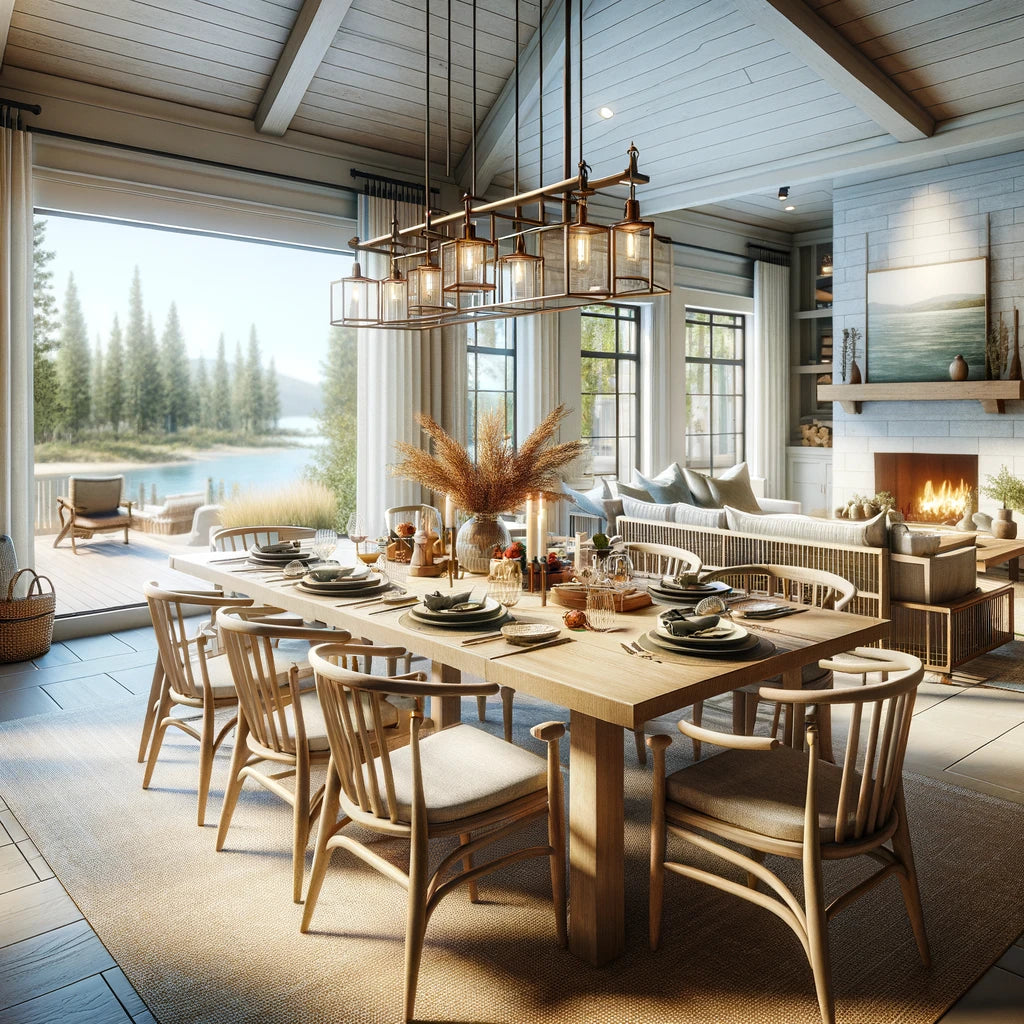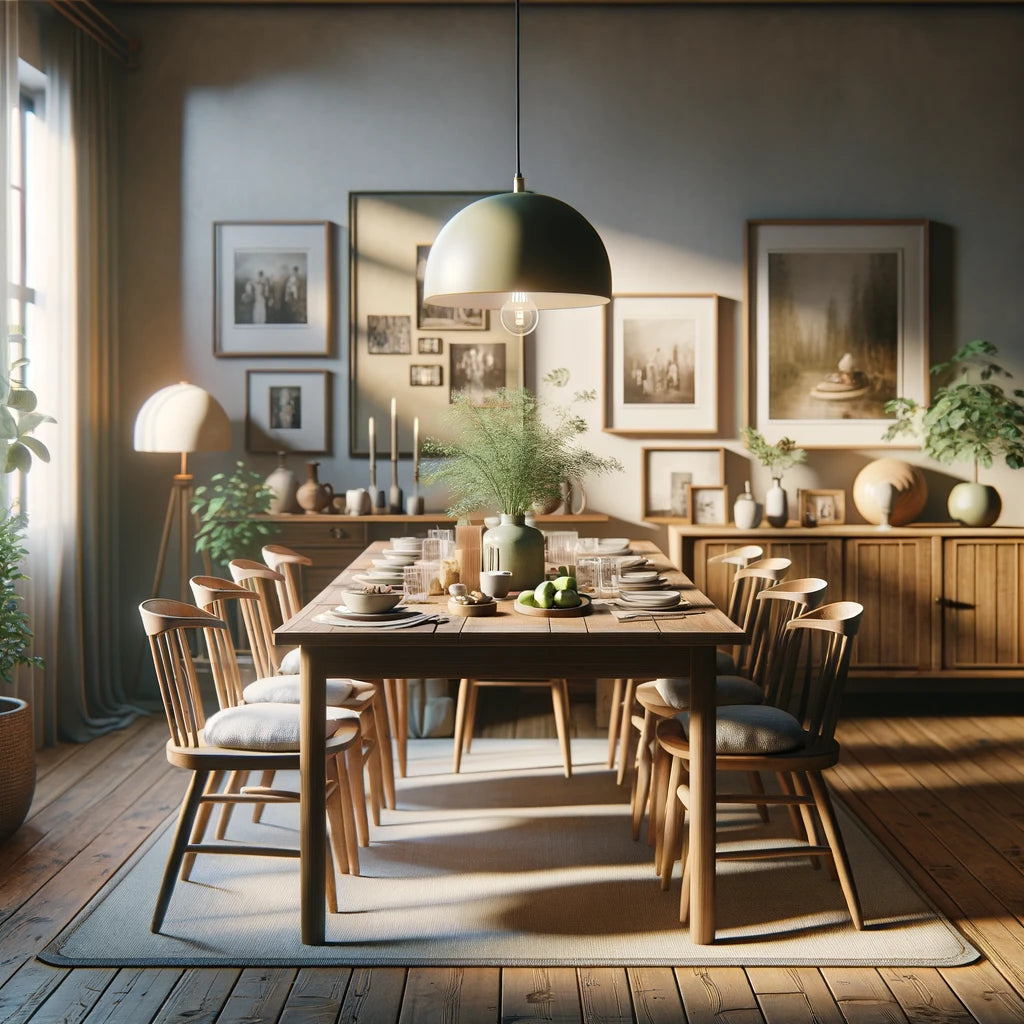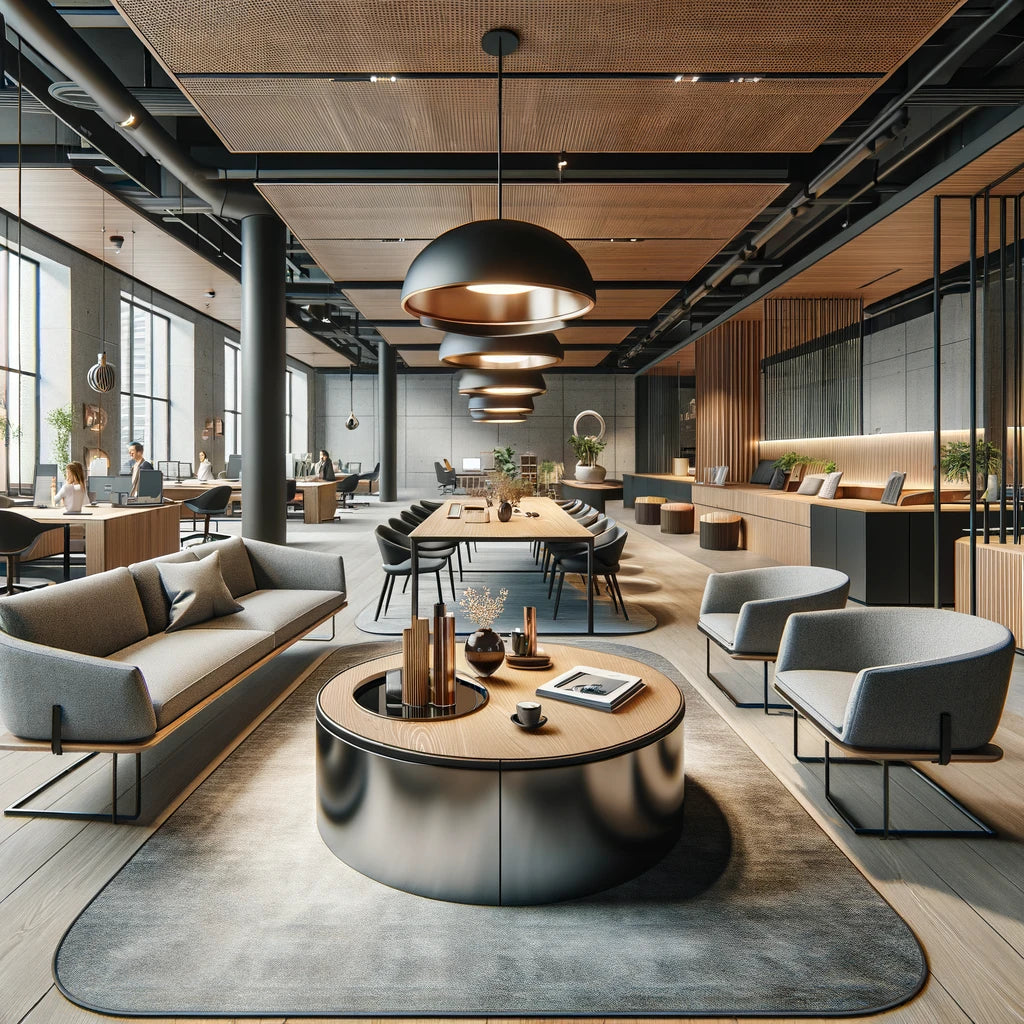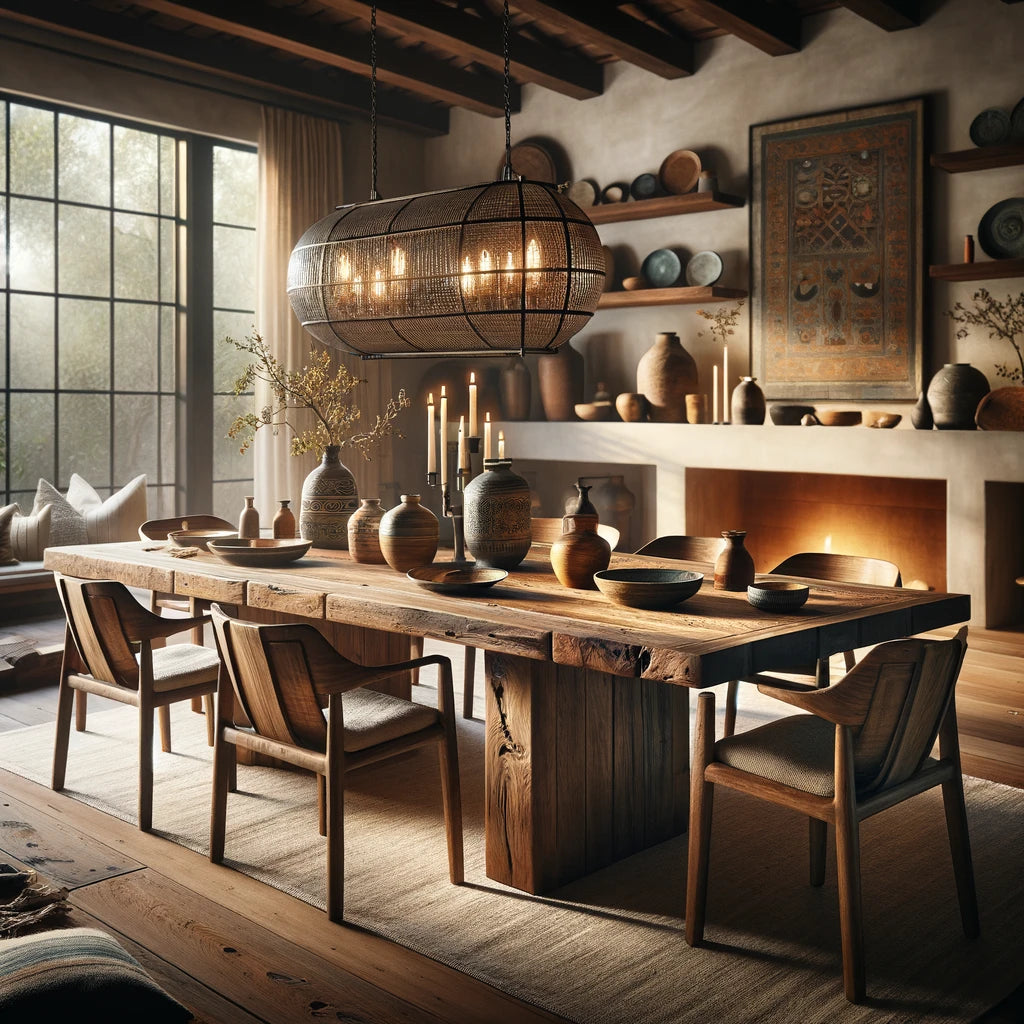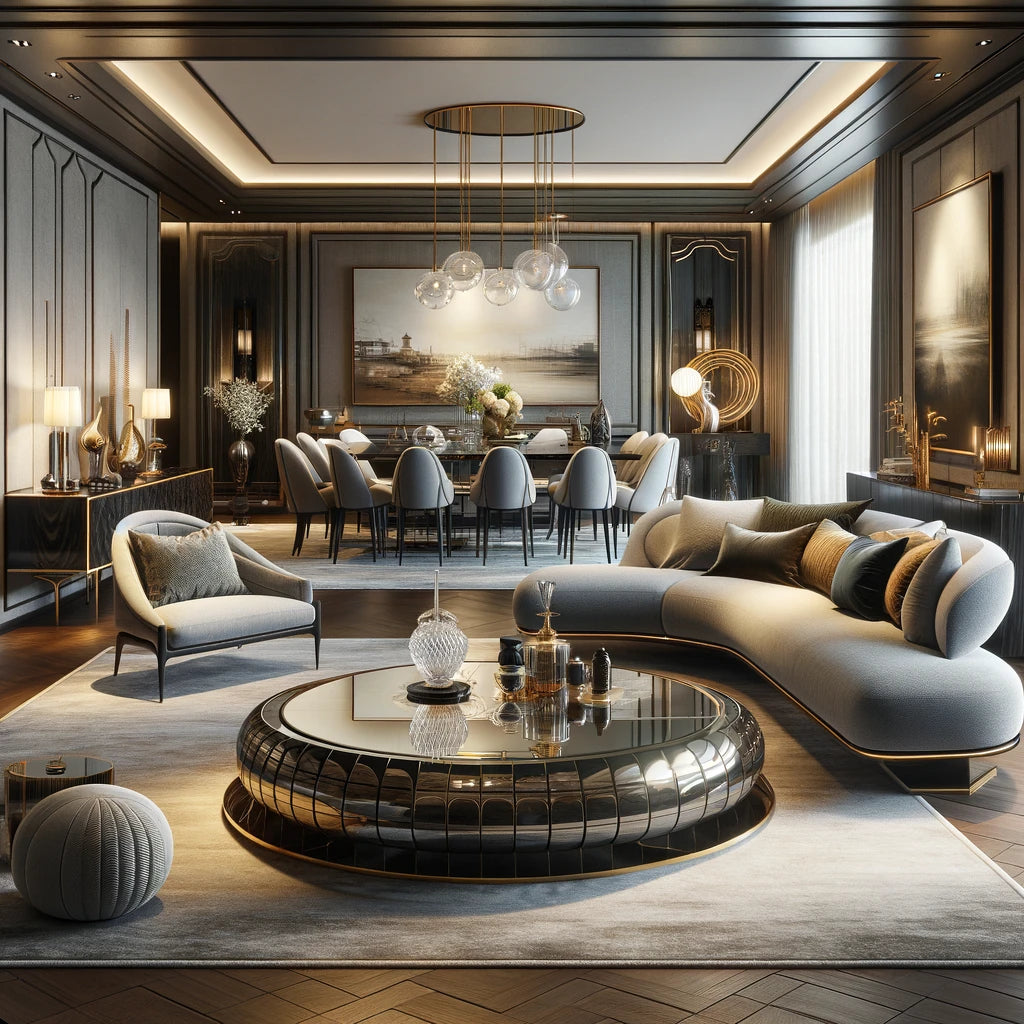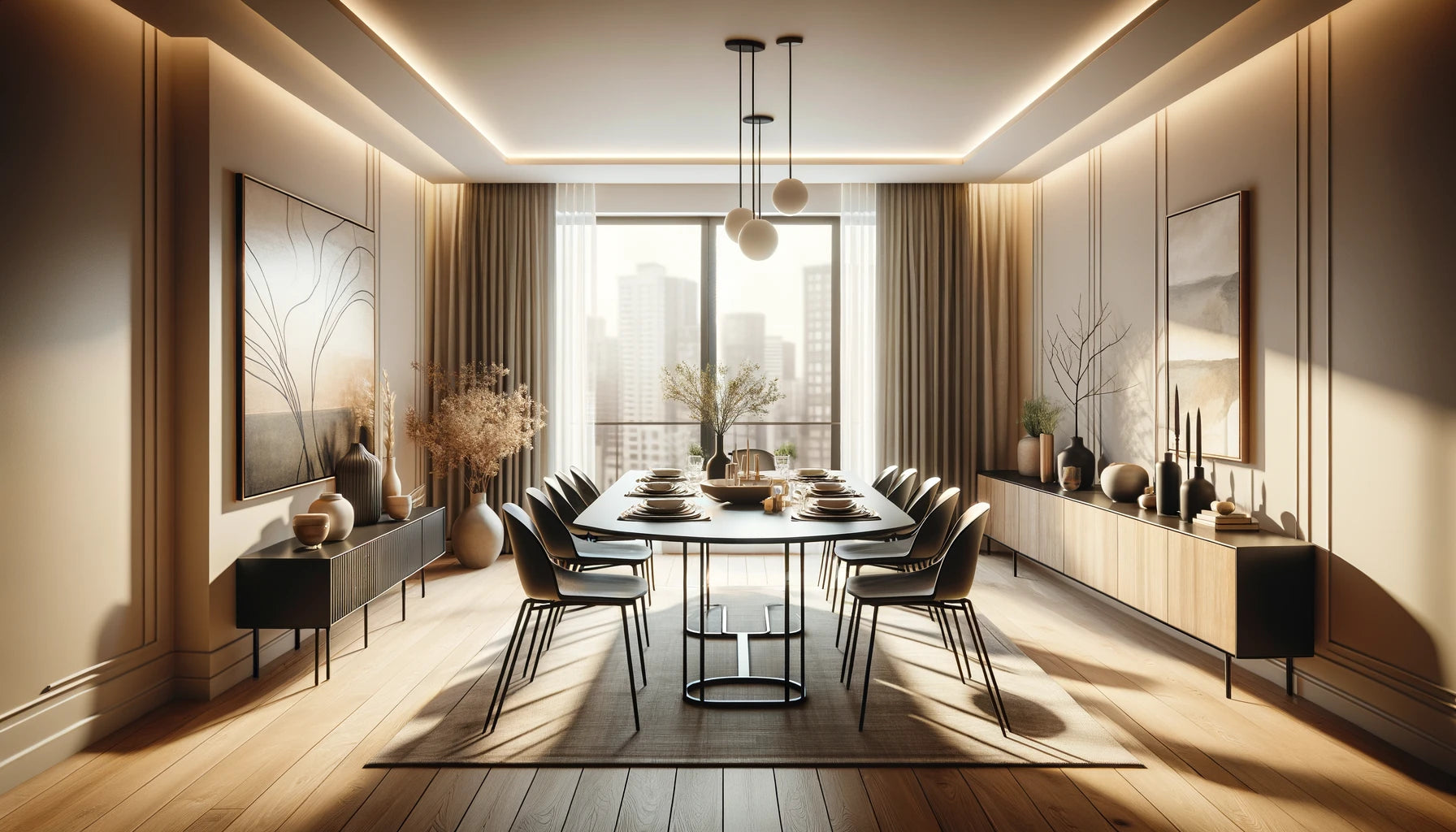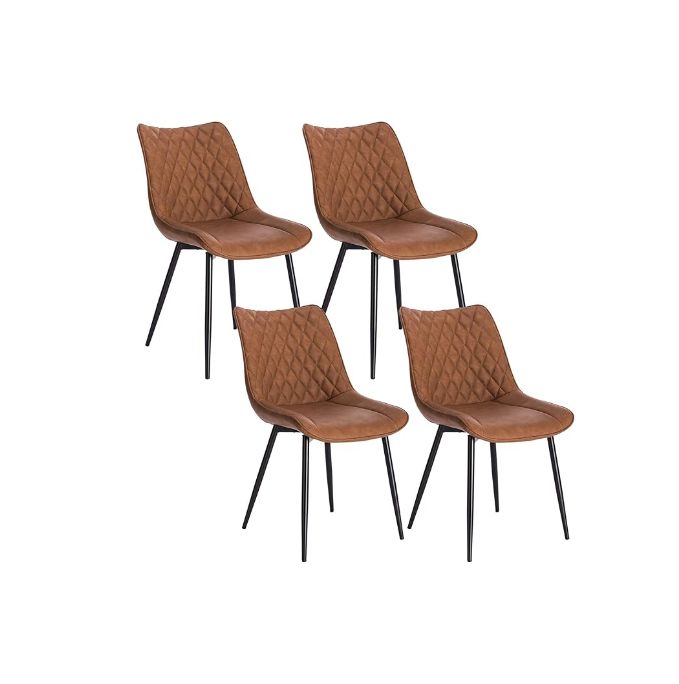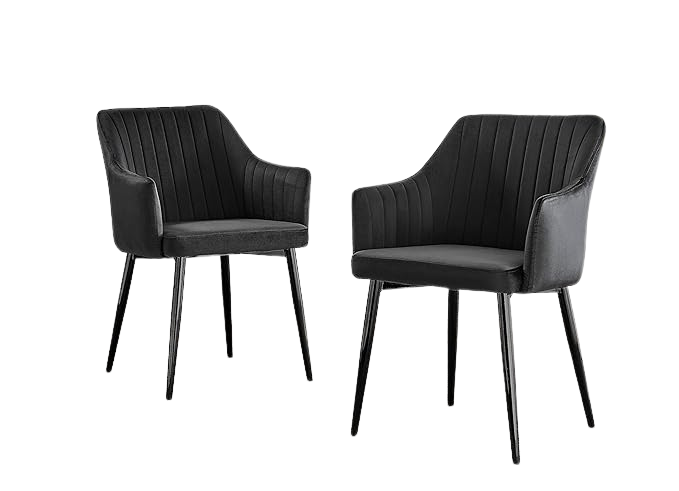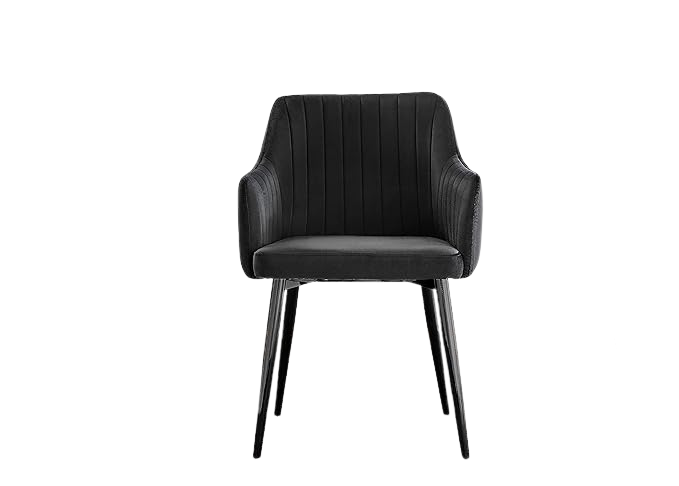The dining space in your vacation home is not just a place to eat; it's where memories are made.
From lively breakfasts fuelling a day of adventure to serene dinners reflecting on the day's experiences, this area is the heart of your retreat. However, balancing the allure of a beautifully designed space with the practicality of durability can be a challenge.
This blog delves into how homeowners can achieve a dining area that withstands the test of time, hosting countless gatherings without losing its charm or functionality.
Understanding the Importance of Durability in Vacation Homes
Vacation homes are sanctuaries where individuals and families seek refuge from the demands of everyday life.
They are retreats where memories are made, stories are shared, and bonds are strengthened. However, unlike primary residences, vacation homes face unique challenges that require careful consideration, especially when it comes to durability.
One of the primary reasons durability is crucial in vacation homes is the varied and often intensive use they experience. Unlike primary residences, which may see daily routines and habits, vacation homes typically accommodate guests sporadically throughout the year. These guests may engage in activities more vigorously or use amenities with less restraint, putting additional strain on furnishings and finishes.
Furthermore, the geographical location of vacation homes can significantly impact their durability requirements. For instance, homes near the beach are exposed to saltwater, sand, and intense sunlight, all of which can accelerate wear and tear on materials. Similarly, properties located in humid climates face challenges such as mould, mildew, and moisture damage, which can compromise the integrity of furnishings and finishes.
In such environments, selecting the right elements for the dining space becomes paramount. Materials must not only withstand the rigours of frequent use but also combat the adverse effects of environmental factors. For instance, opting for moisture-resistant finishes, such as marine-grade wood or outdoor-rated fabrics, can mitigate the risk of warping, fading, or mould growth in humid or coastal regions.
Moreover, durability in furnishings and finishes isn't just about longevity; it's also about preserving the aesthetic appeal of the vacation home. Guests expect a certain level of comfort and elegance during their stay, and worn-out or damaged elements can detract from the overall experience. By investing in durable materials and high-quality craftsmanship, homeowners can maintain the allure of their dining space, ensuring it remains both beautiful and functional for years to come.
Additionally, prioritising durability can lead to significant cost savings in the long run. While initial investment in durable furnishings and finishes may be higher, it pales in comparison to the ongoing maintenance and replacement costs associated with inferior materials. By choosing wisely upfront, homeowners can minimise the need for repairs and renovations, ultimately enhancing the value and enjoyment of their vacation home.
Choosing the Right Materials
Table and Seating Options
Choosing the right materials for your dining table and seating is a crucial step in creating a durable and inviting dining space in your vacation home.
The following options offer a blend of aesthetics, functionality, and longevity:
- Hardwoods: Renowned for their durability and resistance to wear, hardwoods like teak and mahogany are excellent choices for dining tables. They boast natural oils that help protect against moisture, rot, and pests, ensuring that your table ages gracefully over time. Additionally, their rich hues and timeless appeal add warmth and elegance to any dining area.
- Metals: Metals such as aluminium and stainless steel offer a sleek and modern aesthetic while providing exceptional durability. When properly treated for rust resistance, they can withstand outdoor elements with ease, making them suitable for both indoor and outdoor dining spaces. Their lightweight nature also makes them easy to move around, allowing for flexibility in seating arrangements.
- Synthetic Resins: Synthetic resins that mimic the look of wicker or wood offer the charm of natural materials without the maintenance concerns. These materials are specially designed to withstand moisture, UV exposure, and fluctuations in temperature, making them ideal for outdoor or semi-outdoor dining areas. They require minimal upkeep and can maintain their appearance for years without fading or warping.
When selecting furniture, it's essential to consider not only the material's durability but also its ease of maintenance and resistance to common damages. Look for finishes that can be easily touched up or furniture designs that embrace a patina, as this adds character to your dining space over time. Additionally, opt for materials that are resistant to scratches, stains, and fading, ensuring that your furniture remains looking its best even after years of use.
By carefully considering the materials for your dining table and chairs, you can create a dining space in your vacation home that is both resilient and visually appealing.
Whether you prefer the classic elegance of hardwoods, the contemporary flair of metals, or the low-maintenance convenience of synthetic resins, there are options available to suit your taste and lifestyle while ensuring lasting durability and enjoyment.
Flooring Choices
Selecting the right flooring for your vacation home's dining area is crucial for maintaining both functionality and aesthetic appeal.
Here are some flooring options to consider, each offering unique benefits in terms of durability, maintenance, and style:
- Tile Flooring: Porcelain Tile: Renowned for its durability and versatility, porcelain tile is an excellent choice for dining areas. It is highly resistant to scratches, stains, and moisture, making it ideal for withstanding spills, scraped chairs, and heavy foot traffic. Porcelain tile can also mimic the look of natural wood or stone, offering a stylish yet practical flooring option for vacation homes. Additionally, its smooth surface makes it easy to clean, requiring only regular sweeping and occasional mopping to maintain its appearance.
- Hardwood Flooring: Natural Beauty with Maintenance: Hardwood floors exude timeless elegance and add warmth and character to any space. While they require more maintenance and protection in high-humidity environments, proper care can ensure their longevity and beauty for years to come. Hardwood floors can be sanded and refinished to repair scratches and surface damage, allowing them to age gracefully over time. With the right protective measures, such as area rugs and furniture pads, hardwood flooring can withstand the rigours of a vacation home dining area while maintaining its charm and appeal.
- Composite Decking or Vinyl Flooring: Durability and Low Maintenance: Composite decking and high-quality vinyl flooring offer durability and ease of maintenance without sacrificing style. These materials are resistant to scratches, stains, and moisture, making them suitable for high-traffic areas like dining spaces. Composite decking can provide a rustic yet modern look, while vinyl flooring comes in a variety of styles and designs, including options that mimic the appearance of hardwood or tile. Both materials are easy to clean and require minimal upkeep, making them ideal for vacation homes where convenience is key.
When choosing flooring for your vacation home's dining area, consider factors such as durability, maintenance requirements, and aesthetic preferences.
Whether you opt for the timeless appeal of hardwood, the practicality of porcelain tile, or the modern convenience of composite decking or vinyl flooring, selecting the right flooring can enhance the overall functionality and beauty of your dining space, ensuring years of enjoyment for you and your guests.
Style Meets Substance: Integrating Design and Durability
Integrating design and durability in your dining space is essential for creating an environment that not only looks stylish but also stands the test of time.
Here are some strategies to achieve this harmonious balance:
- Classic Designs: Choose furniture and decor with timeless appeal. Classic designs, such as traditional wooden dining tables or upholstered chairs with simple, elegant lines, are less likely to go out of style as trends evolve. By investing in timeless pieces, you ensure that your dining space remains visually appealing for years to come, regardless of changing design preferences.
- Local Art and Elements: Incorporating local art or elements into your dining space adds a unique touch of personality and connection to the locale. Whether it's a painting by a local artist, handcrafted ceramics, or décor inspired by the natural surroundings, these elements infuse your dining area with a sense of place and authenticity. Not only does this enrich the aesthetic appeal of the space, but it also fosters a deeper connection to the environment and culture of the vacation home's location.
- Quality Materials: Choose furniture and materials known for their durability and longevity. Opt for high-quality woods, such as oak or walnut, for tables and chairs that can withstand daily use without sacrificing style. Invest in upholstery fabrics with high durability ratings and easy-to-clean properties, ensuring that your dining furniture remains looking fresh and inviting for years to come.
- Practical Considerations: Balance style with practicality by considering the needs of your dining space. For example, if your vacation home is near the beach or in a humid climate, choose materials that can withstand moisture and salt air, such as rust-resistant metals or synthetic wicker furniture. Similarly, prioritise easy-to-clean surfaces and stain-resistant finishes to minimise maintenance efforts while preserving the aesthetic appeal of your dining area.
- Flexibility and Adaptability: Design your dining space with flexibility in mind to accommodate different needs and occasions. Opt for furniture arrangements that can easily be reconfigured to accommodate varying numbers of guests or activities. Consider multifunctional pieces, such as extendable tables or benches with storage compartments, that maximise space efficiency while enhancing the versatility of your dining area.
By integrating design and durability in your vacation home's dining space, you create a harmonious environment that combines style with substance.
Embrace timeless designs, incorporate local elements, prioritise quality materials, and consider practical considerations to ensure that your dining area remains both visually appealing and functional for years to come.
Practical Tips for Maximising Durability
Protective Measures
Protective measures play a crucial role in preserving the beauty and longevity of your dining space furnishings, ensuring that they withstand the rigours of daily use and environmental factors.
Here's how investing in protective measures can help safeguard your dining area:
- Table Protection:
- Table Pads: Table pads provide a protective layer between your dining table and hot dishes, sharp utensils, and spills, preventing scratches, heat damage, and stains. They come in various sizes and materials, allowing you to choose the best option for your table's shape and size.
- Coasters and Placemats: Coasters and placemats offer additional protection against water rings, heat marks, and scratches caused by glasses, plates, and utensils. They come in a wide range of styles and materials, allowing you to coordinate them with your dining décor while keeping your table surfaces looking pristine.
- Outdoor Furniture Protection:
- Furniture Covers: Outdoor furniture covers are essential for protecting your outdoor dining set from the elements, including rain, snow, sun exposure, and dust. They help prevent fading, rusting, and moisture damage, prolonging the life of your outdoor furnishings and ensuring they remain in good condition year-round.
- UV-Protectant Sprays: UV-protectant sprays are designed to shield outdoor fabrics, such as cushions and upholstery, from sun damage and fading. They create a protective barrier that blocks harmful UV rays, preventing premature deterioration and discoloration of your outdoor furniture.
- Flooring Protection: Area Rugs: Area rugs can help minimise wear and tear on your dining room flooring, particularly in high-traffic zones like under the dining table and chairs. They provide a buffer against scratches, scuffs, and spills, while also adding warmth and visual interest to the space. When selecting area rugs for your dining area, choose materials that are suitable for the environmental conditions, such as moisture-resistant fibres for coastal or humid climates.
By investing in these protective measures, you can significantly extend the life of your dining space furnishings and maintain their appearance and functionality for years to come.
Whether you're safeguarding your dining table from scratches and spills, protecting your outdoor furniture from weather-related damage, or minimising wear on your flooring with area rugs, taking proactive steps to preserve your furnishings will enhance the enjoyment and longevity of your dining area.
Maintenance and Care
Maintaining your dining space is essential to uphold its durability, functionality, and aesthetic appeal over time.
By incorporating routine maintenance and care practices into your regular household tasks, you can ensure that your furnishings remain in top condition. Here's how to effectively maintain different types of dining space furniture:
- Wood Furniture: Periodic Oiling or Sealing: Depending on the type of wood and finish, your wooden dining furniture may require periodic oiling or sealing to nourish the wood and protect it from moisture and wear. Apply a high-quality wood oil or sealant according to the manufacturer's instructions to maintain the wood's natural beauty and resilience.
- Metal Furniture: Rust Prevention: Regularly inspect metal furniture for signs of rust or damage, especially if it's used outdoors or in humid environments. Treat any rust spots promptly by sanding the affected area and applying a rust-resistant primer and paint. This will help prevent corrosion and prolong the lifespan of your metal furniture pieces.
- Upholstered Chairs:
- Regular Vacuuming: Upholstered chairs should be vacuumed regularly to remove dust, crumbs, and debris that can accumulate on the fabric. Use a soft brush attachment to gently vacuum the upholstery and prevent dirt from settling into the fibres.
- Immediate Stain Treatment: Treat spills and stains on upholstered chairs promptly to prevent them from setting into the fabric. Blot the stain with a clean, damp cloth and a mild upholstery cleaner, working from the outside in to avoid spreading the stain. Avoid rubbing or scrubbing, as this can damage the fabric fibres.
- Synthetic Materials: Simple Cleaning: Synthetic materials, such as plastic or resin, are typically low-maintenance and require minimal care. Simply wash them with mild soap and water using a soft cloth or sponge to remove dirt and grime. Avoid abrasive cleaners or harsh chemicals, as they can damage the surface of synthetic materials.
In addition to these specific maintenance tasks, here are some general tips for caring for your dining space furnishings:
- Avoid Direct Sunlight: Position your furniture away from direct sunlight to prevent fading and discoloration, especially for wood and upholstered pieces.
- Use Furniture Protectors: Place felt pads or furniture glides under the legs of chairs and tables to prevent scratches and damage to flooring surfaces.
- Rotate Furniture: Periodically rotate and rearrange your furniture to distribute wear and tear evenly and prevent excessive fading or indentation in specific areas.
- Follow Manufacturer's Guidelines: Always follow the manufacturer's guidelines and recommendations for cleaning and maintenance to ensure the longevity of your dining space furnishings.
By incorporating these maintenance and care practices into your regular household routine, you can preserve the beauty and functionality of your dining space for years to come, ensuring that it remains a welcoming and enjoyable area for family gatherings and meals with friends.
Lighting and Accessories: The Finishing Touches
Lighting and accessories play a pivotal role in putting the finishing touches on your dining space, elevating its ambiance and functionality while complementing its durable design.
Here's how to integrate lighting fixtures and accessories effectively:
- Lighting Fixtures:
- Outdoor Areas: For outdoor dining spaces, prioritise weather-resistant lighting fixtures that can withstand exposure to the elements. Opt for materials such as stainless steel, aluminium, or durable plastics that resist corrosion and fading caused by sun exposure and moisture. Consider options like LED lights, which are energy-efficient and have a long lifespan, reducing the need for frequent bulb replacements.
- Indoor Spaces: In indoor dining areas, choose lighting fixtures made from easy-to-clean materials that maintain their appearance with minimal effort. Consider pendant lights or chandeliers with wipeable surfaces or glass shades that can be easily cleaned with a damp cloth. Additionally, opt for fixtures with adjustable brightness levels to create the desired ambiance for different dining occasions.
- Accessories:
- Easy-to-Clean Materials: When selecting accessories such as candles, vases, or table runners, opt for materials that are easy to clean and maintain. Choose stain-resistant fabrics for table runners or placemats that can be quickly wiped clean with a damp cloth. Select non-porous materials like glass or ceramic for vases or decorative bowls, making them easy to rinse or wipe down as needed.
- Durability and Elegance: Look for decorative items that strike a balance between durability and elegance, enhancing the dining experience without adding undue maintenance efforts. For example, choose sturdy candle holders made from metal or ceramic that can withstand accidental bumps or knocks without breaking. Consider decorative accents like faux greenery or floral arrangements that add a touch of freshness and beauty to the space without requiring watering or pruning.
- Consistency in Design: Coordinate with the Overall Design: Ensure that lighting fixtures and accessories complement the overall design aesthetic of your dining space. Choose pieces that harmonise with the existing décor, whether it's modern and minimalist, rustic and cosy, or eclectic and bohemian. Consistency in design creates a cohesive and visually pleasing atmosphere that enhances the dining experience for you and your guests.
- Functionality and Style: Balance Functionality with Style: Strike a balance between functionality and style when selecting lighting fixtures and accessories. Prioritise items that not only look aesthetically pleasing but also serve a practical purpose in enhancing the dining experience. For example, consider incorporating dimmable lighting options that allow you to adjust the brightness level according to the time of day or mood of the occasion.
By carefully choosing lighting fixtures and accessories that complement the durability-focused design of your dining space, you can create an atmosphere that is both inviting and effortless to maintain.
With weather-resistant lighting for outdoor areas, easy-to-clean materials for indoor fixtures and accessories, and a cohesive design aesthetic that balances functionality with style, your dining space will exude elegance and charm while remaining practical and resilient for years to come.
Conclusion
Designing a dining space in your vacation home that balances aesthetic appeal with practical durability is an achievable goal. By selecting the right materials, incorporating timeless design elements, and employing protective and maintenance strategies, you can create a space that hosts countless memories without showing its age. Let your dining area be a testament to the beauty of durability, a place where moments are savoured, and the charm lasts for generations to come.
This comprehensive guide aims to inspire and assist in creating dining spaces that stand the test of time, ensuring your vacation home remains a beloved retreat for years to come.

